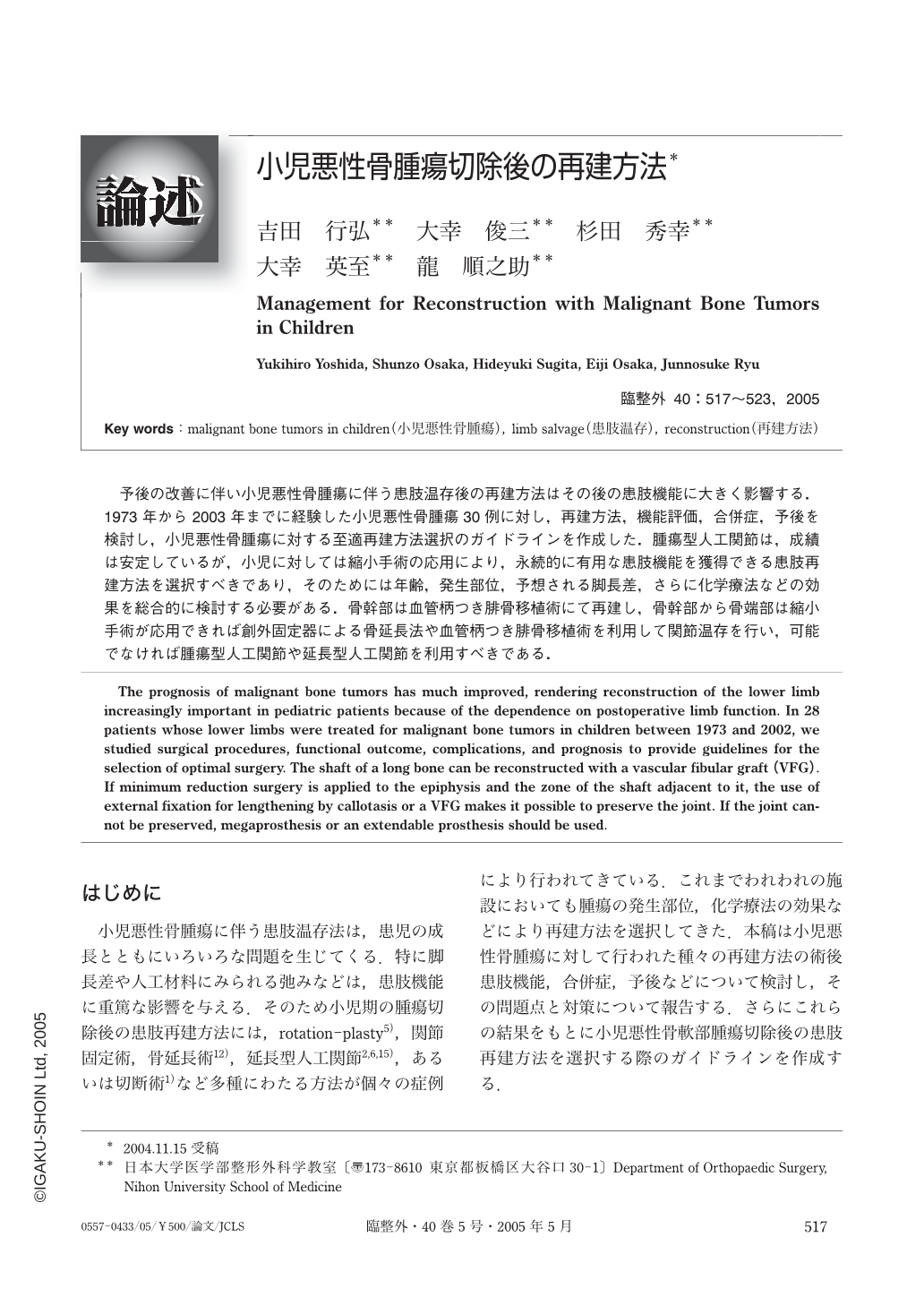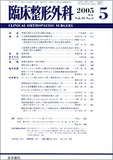Japanese
English
- 有料閲覧
- Abstract 文献概要
- 1ページ目 Look Inside
予後の改善に伴い小児悪性骨腫瘍に伴う患肢温存後の再建方法はその後の患肢機能に大きく影響する.1973年から2003年までに経験した小児悪性骨腫瘍30例に対し,再建方法,機能評価,合併症,予後を検討し,小児悪性骨腫瘍に対する至適再建方法選択のガイドラインを作成した.腫瘍型人工関節は,成績は安定しているが,小児に対しては縮小手術の応用により,永続的に有用な患肢機能を獲得できる患肢再建方法を選択すべきであり,そのためには年齢,発生部位,予想される脚長差,さらに化学療法などの効果を総合的に検討する必要がある.骨幹部は血管柄つき腓骨移植術にて再建し,骨幹部から骨端部は縮小手術が応用できれば創外固定器による骨延長法や血管柄つき腓骨移植術を利用して関節温存を行い,可能でなければ腫瘍型人工関節や延長型人工関節を利用すべきである.
The prognosis of malignant bone tumors has much improved, rendering reconstruction of the lower limb increasingly important in pediatric patients because of the dependence on postoperative limb function. In 28 patients whose lower limbs were treated for malignant bone tumors in children between 1973 and 2002, we studied surgical procedures, functional outcome, complications, and prognosis to provide guidelines for the selection of optimal surgery. The shaft of a long bone can be reconstructed with a vascular fibular graft (VFG). If minimum reduction surgery is applied to the epiphysis and the zone of the shaft adjacent to it, the use of external fixation for lengthening by callotasis or a VFG makes it possible to preserve the joint. If the joint cannot be preserved, megaprosthesis or an extendable prosthesis should be used.

Copyright © 2005, Igaku-Shoin Ltd. All rights reserved.


